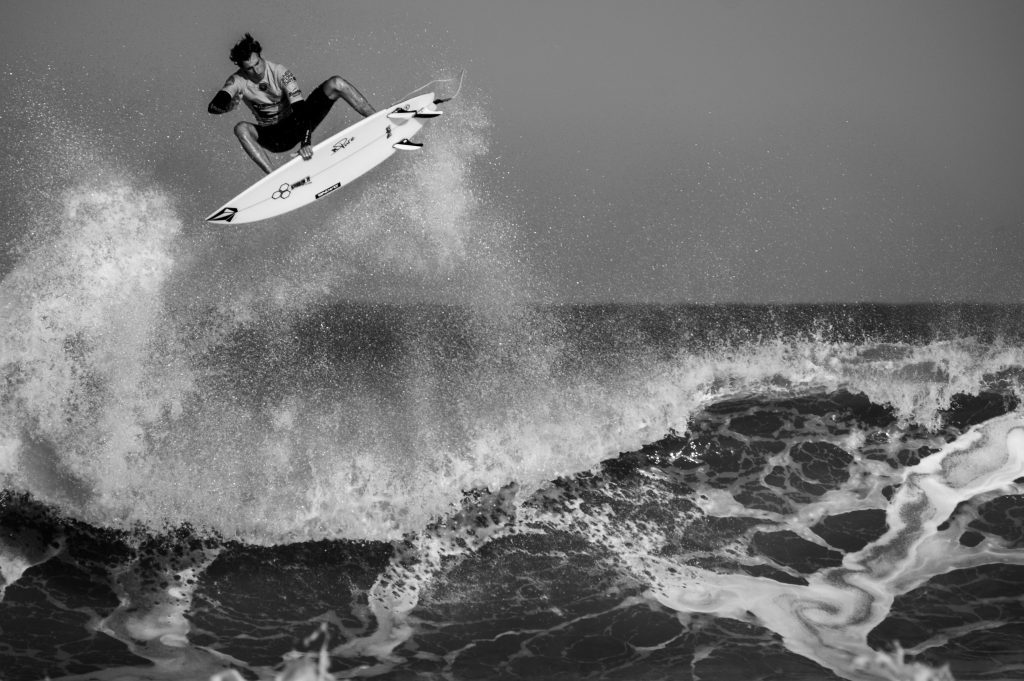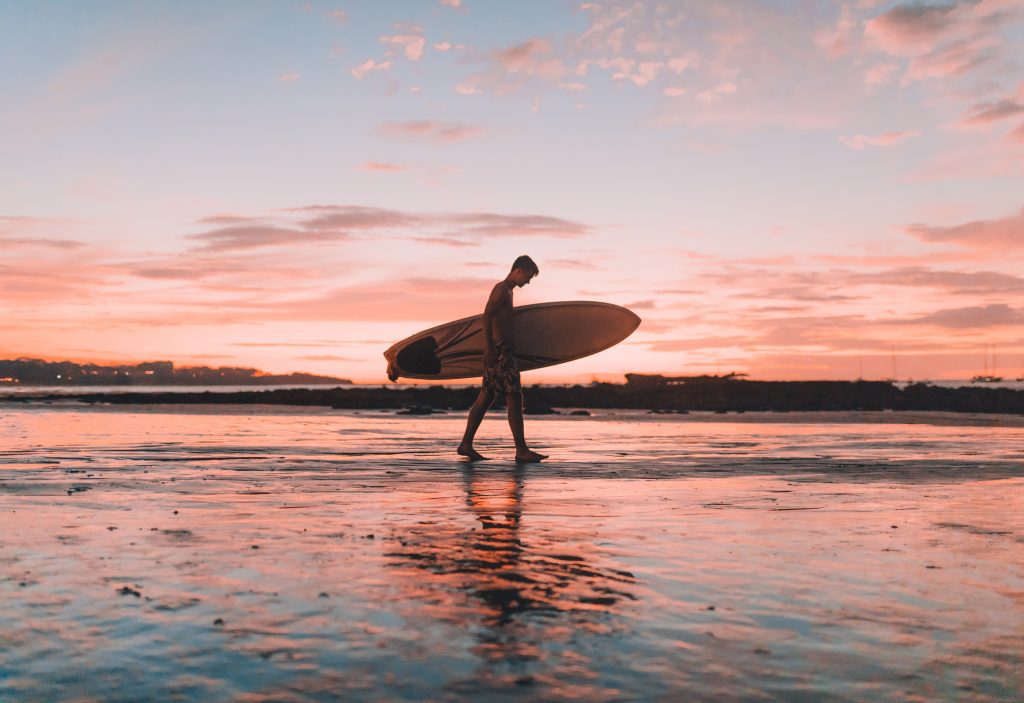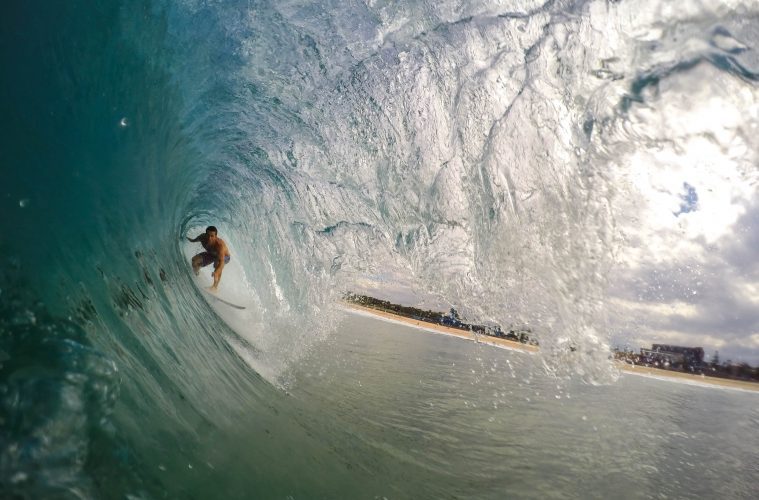When going on a surfing trip, there are certain things you can’t leave behind. After all, the idea of a weekend spent near some waves is enough to motivate most surfers to pack up and carpool for some surfing action. For those who might be new to the sport, or those who are attending a surfing competition (which may be taking place near the ocean), here are four things that come to mind that you should never leave behind.

A Quality Wetsuit
Surfers know that a wetsuit is an essential part of their wardrobe and comes in various forms: shorties, booties, and full suits. There are different reasons to wear each type, but it’s important to choose the type of wetsuit that will protect you from the elements while also not restricting movement. You can find some of the best wetsuits online if you do a quick Google search.
As such, shorties are great for beginners who don’t want to get too overheated, while full suits come in handy when the waves are coldest. Booties come in a variety of styles and can be worn with or without socks, but they come in handy when it’s time to walk down the beach.
Aside from thermal protection, a wetsuit also comes in handy when one falls in the water without a lifeguard nearby. The suit will come to your rescue if you need it, so choose wisely.
Pack Of Towel
When it comes time to get off of the board after catching some decent waves, it would be unfortunate if you realized you didn’t have anything to dry off with. Of course, there are always extra towels at home so perhaps picking one isn’t necessary, but bringing an extra would come in handy.
Since the ‘olden days’ when surfers hung out on smooth, fiberglass boards that were heavy to carry, one of them would be designated as a drying area for your towel/wetsuit after riding the waves. As long as there are no thick trees around you while surfing, having something to place your wet items on works well enough. If you don’t have anything to spare, though, make sure you bring some sort of bag or container for your wet clothes and towel.
Wax
Wax is an absolutely essential part of surfing and can come in different forms: liquid or wax sticks. Wax helps you apply traction on your board as well as come out without a scratch if you fall off your board. Liquid wax is typically applied by pouring it on the deck of the board, which you then rub so that it coats the bottom and comes up against your feet. Wax sticks come with a cloth surface which you need to rub against your surfboard in order to get traction.
Many surfers are particular about their wax preference, so come prepared with the way you want before hitting the waves.

A Surfboard
Of course, a weekend of surfing won’t be complete without aboard. Whether you’re renting one or bringing your own, it’s best to come with a surfboard that is in good condition and has been waxed properly. When choosing the shape of your board, consider the type of conditions you’ll be surfing in, small waves may need a smaller board, while larger ones may result in a larger board being more useful.
You should come with at least one leash and booties (minimum), especially if you’re renting. Rental boards come with their own leashes, but it’s always good to come prepared for the worst-case scenario where the board is lost, or you break your leash. While most surfboards you should come with a leash, come with at least one spare leash just in case. In the event of a bad break, you’ll be glad you have an extra leash to compensate for lost time.
Most local surf shops will offer booties on sale or rent them out for very cheap prices. If not, consider bringing your own because it’s extremely handy and crucial when surfing in cold waters.
You can consider bringing fins, but this may come down to personal preference. Surfers with longboard surfboards such as longboarder Shaun Flannery aren’t big fans of using their own set of fins, so come without them if you’d like. However, for short boarders and above, come with a pair of fins or consider bringing your own just in case the rental boards come with faulty ones.
Sunscreen & Outdoor Protectant
One thing that slips many surfers’ minds is sunscreen and outdoor protection for when they come off of the beach. They’ll come covered in sand and saltwater, which can dry out their skin; make sure you come prepared to avoid this by packing your favorite sunscreen (SPF 15 – 30) and outdoor protectant like Coppertone Sport Sunscreen Lotion SPF 45 or Banana Boat Sport Performance Sunscreen. It will help you come out of the weekend without looking like a shriveled raisin.
That’s all there is to pack for a weekend of surfing. Of course, come with other essentials such as water and any food you might need, although this will come down to personal preference. Just make sure you come prepared, and you should have no problems having an amazing time at the beach!
A Water-Resistant Duffel Bag
The one item you don’t want to forget is the bag your clothes are going to come back in. A water-resistant duffel bag is a great choice for this since it’s cheap, convenient, and allows you to fit everything you need for the weekend.
Most duffle bags come with a waterproof bottom panel that doubles as a stuff sack for your wetsuit. This not only saves valuable space but keeps the rest of your clothes dry in case the board shorts you packed to come back from the beach are soaked. It also makes it easy to pack since everything is already separated.
In addition, try to pick one with side pockets, so you can fit shampoo bottles or any other toiletries without having them roll around inside. The last thing you want is water spilling out of an open bottle all over your clothes. It didn’t stay closed during transit.
In order to come out of a weekend of surfing looking as stylish as possible, come prepared. Pack your sunscreen and outdoor protectant for protection from the sun’s harsh rays, as well as come with a wetsuit. It is also advisable to come with a surfboard, but this may come down to preference on whether you’re renting one or bringing your own. And finally, come with wax sticks and booties if they aren’t provided at the local surf shop where you rent or buy a board from. With these 4 things considered, come enter the weekend ready to catch waves.


